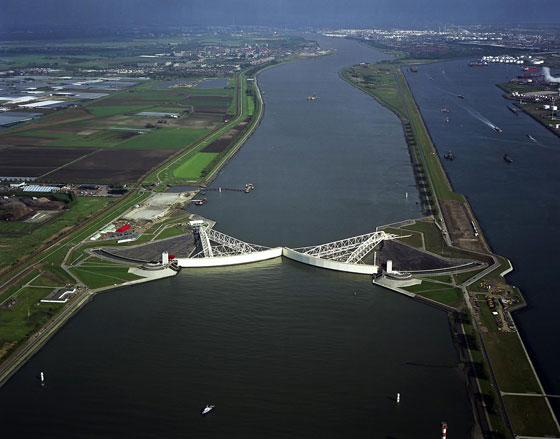I am sure, like me, you are also following the news of the Maldives islands rapid sinking levels and their soon to be disappearance. Last year, I have seen the horrible flood in Bangkok the worst I have ever seen in my 25 years living here. I saw the tsunami in 2005 washing away hole villages and shore lines changing. recently the tsunami in Japan reached levels that broke all scientific scales.
Yes sea levels are rising, there are ample proofs of that, all around us. Floods have become normal occurrence in places that never flooded ten years ago. However as I wrote in my last week blog, the number of properties and towns being developed along sea shores, on reclaimed lands and on river banks is increasing drastically.
Which begs the question; are people ignoring the obvious or are they daring Mother Nature?
London’s flood prevention measures
The Thames Barrier provides good protection for London at present but should there be a major flooding event, the barrier could be breached. In addition, the Thames Barrier was constructed with a life expectancy spanning until 2030. The Environment Agency along with several London water companies have been drafting up plans to reduce the likelihood of major floods in London between 2015 and 2030 which is estimated to cost in the region of £4 billion. Among the ideas to protect Londoners include: raising homes on stilts, Bangladesh-style escape roads, using large areas of Kent and Essex farmland to flood waters during a tidal surge. Some property owners along the River Thames have already put up temporary flood barriers for when waters are particularly high. However, in the future this may not be enough. Building more defences is not always the answer and is not always a sustainable solution. The Environment Agency is also conducting a feasibility study for a new barrier to be sited down river. A barrier there would halt the surge before it reached central London.

Amsterdam High Tech flood protection
The Dutch have been rising to this challenge continuously, since as far back as the 13th century, but maintaining the status quo, and dry feet, is a complex balancing-act between nature and hydraulic engineering, requiring constant monitoring, innovation and improvement. Without its complex network of dikes, flood basins and sea defences, Holland would be literally under water. Additionally, if the nationwide network of pumping stations failed, within a week the entire country would be under 1 metre (3 feet) of water. It’s not surprising, therefore, that the flood protection systems that guarantee the safety of the lowlands are becoming ever more sophisticated.

Here are two examples among many others showing the extent we are going to protect old cities from going literally under water. The cost of these measures is huge and is only possible for rich countries.
So why are countries like Singapore, UAE, Taiwan and Korea aggressively filling the sea to build more water front towns?

